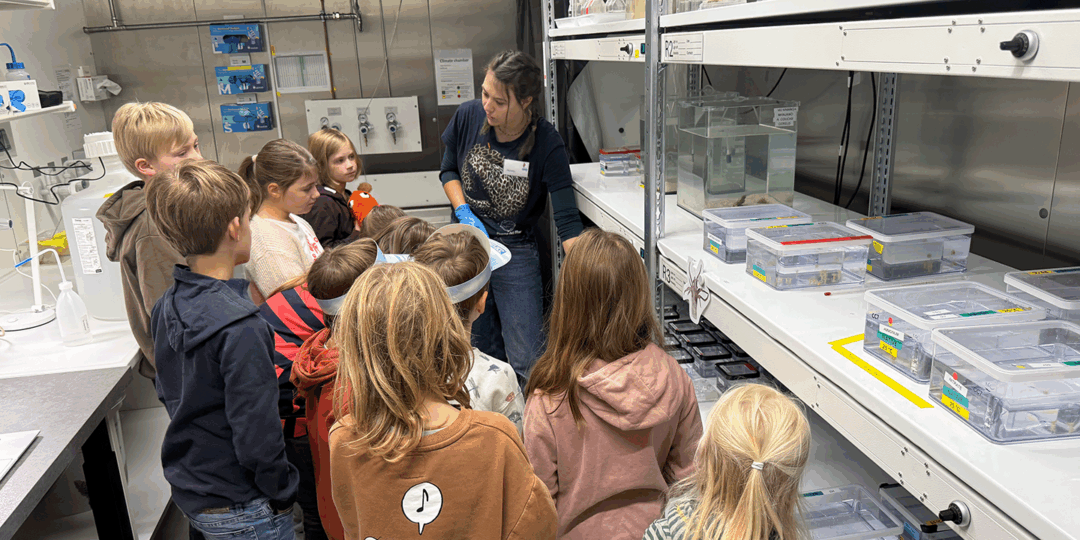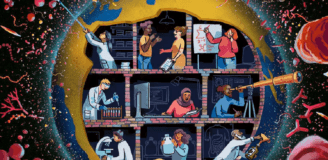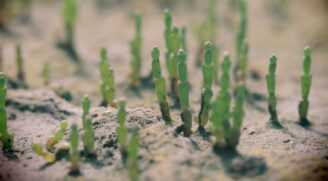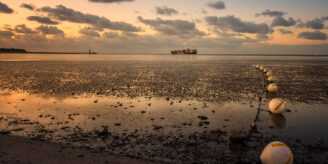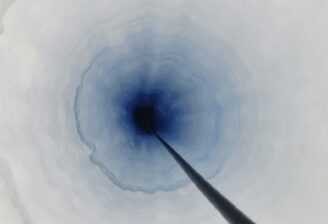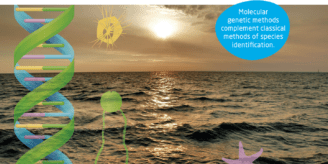From tooth fish to food webs, from molecular genetic tools to underwater acoustics: dive into our current research
Topics
Diving in with “Die Maus”
“What do I have to study to work here?” a girl of about ten asks me, and I’m absolutely delighted, because it seems we’ve achieved what we set out to do: to show how exciting marine research can be and how much joy we find in it.
Did you know?
Unicellular plankton covers a size range that is comparable to the size difference between a small fish and a city like Oldenburg.

A Résumé on the Oldenburg Climate Symposium
The 2nd Oldenburg Climate Symposium was headlined “Climate, People, Ocean” and was meant to be a multidimensional workshop with offerings to scientists, early career professionals, students, policymakers, and the general public. A safe bet for a successful conference is to give excellent researchers the time to develop their ideas in front of the public. We invited eight speakers from near and far to give their personal perspective on the ocean climate connection.
From the Very Small to the Big Picture: A New Era in Microbiology
Microbes were the only life form on Earth for most of the history of our planet. Even today, they still make up the majority of species that are vital to the health of our planet. They produce much of our oxygen, help plants grow, maintain biogeochemical cycles and thus sustain our ecosystems.
Exploring Belonging: A Day on the Island of Spiekeroog
Our one-day retreat on the island Spiekeroog aimed to further strengthen the connections within our Marine Governance group and to explore the notion of “Belonging.” Already the passage to the island with the small speedboat, which rocked with every sigle wave, raised the question, “Do we actually belong here?”—on the water amidst all the ship traffic, right in the middle of the Wadden Sea National Park, surrounded by countless marine organisms that all depend on this rare and threatened habitat?
Mud and the Matter of Seabed Access – Reflections on Sampling in Shallow Seas
For many of us, unless it is part of our everyday work, the seabed is probably a space we think little about. But the seabed, as the recent decision by Norway to undertake mining within its national waters revealed, is a space where accessibility and usage rights are contentious and political. This becomes even more profound when we start to ask about the seabed beyond national jurisdiction where there is a lack of clear ‘ownership’. To whom does the seabed belong?
Reviving PALAOA or the Acoustic Homecoming
Slowly the impressive lance sinks into the ice. It reminds of a Jules Verne-like scientific instrument in the way its copper plates are bolted so craftfully. It is attached to an enormous installation with howling diesel-powered engines that breathes a slow primitive power. Maybe exactly the type of primitive power and patience that is needed to melt through 100m thick shelf ice. We are in the Antarctic standing on the Eckstroem Iceshelf and we are melting holes to finally revive our passive acoustic observatory after a 2-year data gap due to an ice shelf break off in February 2022.
A Kind of Magic – the Diversity of the North Sea Fauna Revealed by Genetic Traces in Seawater
Do we have sufficient reference data and the appropriate methods and techniques to identify the biodiversity of marine fauna in the dynamic waters of the North Sea using genetic traces from seawater? The aim of a study by the HIFMB Focus Group Marine Molecular Ecology was to evaluate these uncertainties and to bring the method of environmental DNA (eDNA) metabarcoding into application for monitoring and questions on marine conservation in the North Sea.
